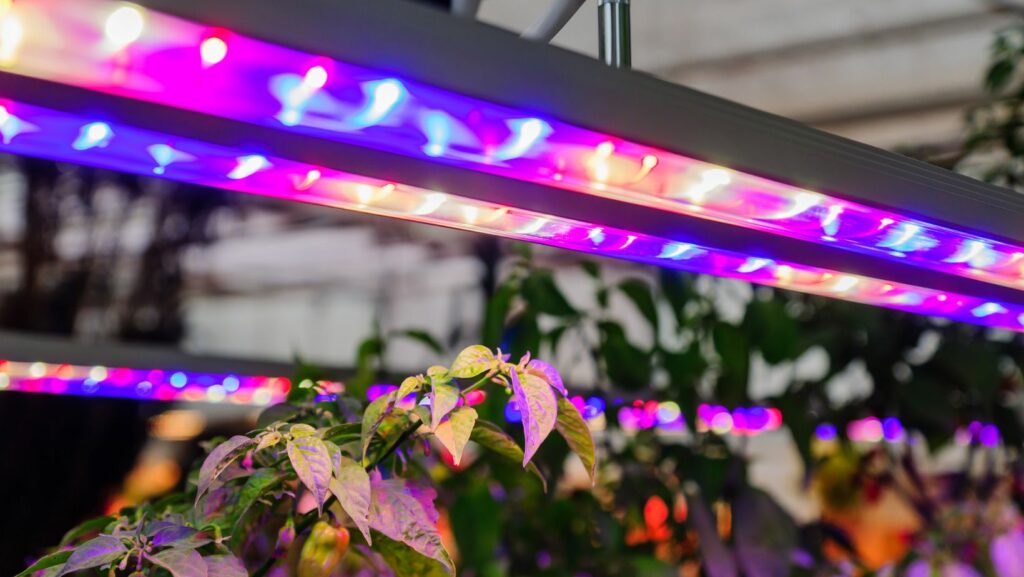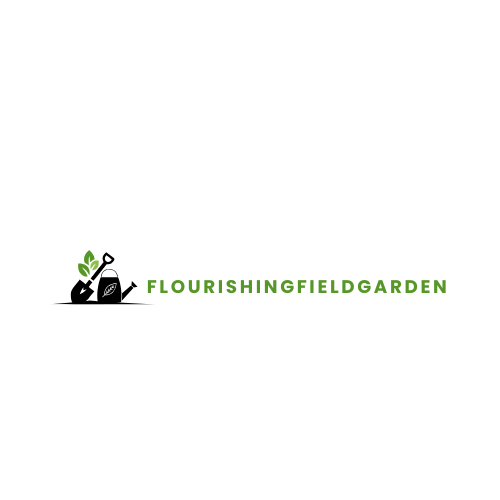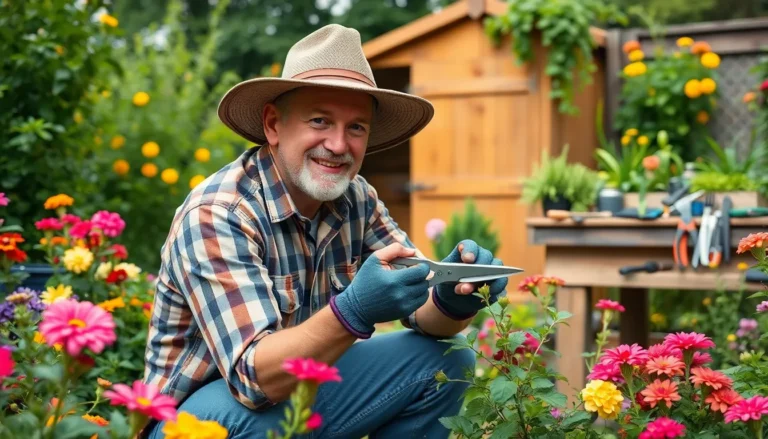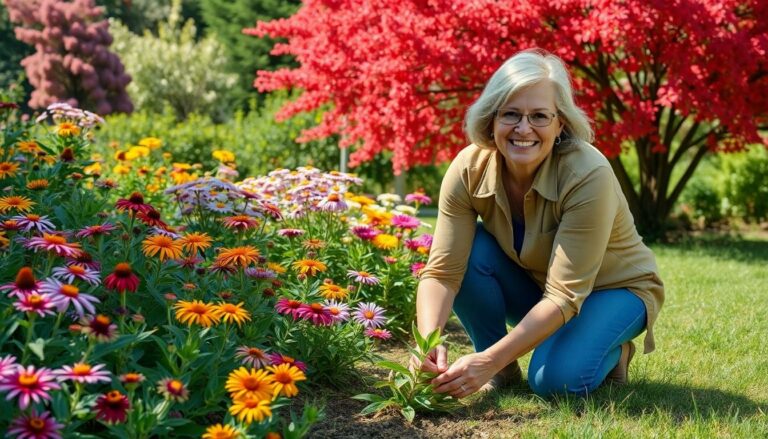The pursuit of cultivating plants beyond their natural seasons or environments is an ancient human endeavor. While greenhouses extended growing periods, the critical role of light – the fundamental energy source for photosynthesis – remained constrained by geography and daylight hours. The development of artificial plant lighting, particularly Light Emitting Diodes (LEDs), represents a transformative leap, enabling precise control over plant growth in controlled environments, from vast vertical farms to urban apartments. Understanding the science behind light’s interaction with plants and the technology delivering it is essential for modern horticulturists.
Photosynthesis and the Light Spectrum: Beyond Human Vision
Plants perceive light differently than humans. Our vision peaks in the green-yellow spectrum, but plants primarily utilize specific wavelengths for photosynthesis and photomorphogenesis (light-mediated development). Photosynthetically Active Radiation (PAR), spanning 400 to 700 nanometers (nm), encompasses the light plants use to convert carbon dioxide and water into carbohydrates. Within PAR, chlorophyll a and b absorb most strongly in the blue (400-500nm) and red (600-700nm) regions. Blue light generally promotes compact, vegetative growth and influences stomatal opening. Red light is crucial for driving photosynthesis and, especially far-red light (700-750nm), significantly regulates flowering and stem elongation through the phytochrome system. Green light (500-600nm), once thought less useful, penetrates deeper into the canopy and contributes to overall photosynthetic efficiency. Modern horticultural lighting focuses on delivering these key wavelengths efficiently.
The Evolution of Horticultural Lighting: From Sunlight Supplement to Precision Tool
Early artificial lighting relied on incandescent bulbs, inefficient and spectrum-deficient for plants. Fluorescent tubes, particularly high-output T5 types, offered better efficiency and a broader spectrum, becoming staples for seedlings and herbs. However, the real revolution came with High-Intensity Discharge (HID) lamps: Metal Halide (MH), emitting more blue light suitable for vegetative growth, and High-Pressure Sodium (HPS), rich in red/orange light favored for flowering and fruiting. Despite their intensity, HID systems generate significant heat, requiring robust ventilation, and consume substantial electricity. The search for cooler, more efficient, and spectrally tunable solutions paved the way for LED dominance.
LED Technology: Precision, Efficiency, and Control
LEDs function by passing an electrical current through a semiconductor material, emitting light at specific wavelengths determined by the material’s properties. This inherent characteristic allows LEDs to be engineered to emit precise, narrow-band wavelengths crucial for plant growth. Modern horticultural LED fixtures combine multiple types of diodes (blue, deep red, far-red, white, sometimes green or UV) to create tailored spectra optimized for specific crops or growth stages. The advantages are compelling:
Energy Efficiency: LEDs convert a significantly higher percentage of electrical energy into usable PAR light (measured as Photon Efficacy – micromoles per joule, µmol/J) compared to HPS or fluorescents. This translates to lower operational costs and reduced environmental impact.
Reduced Heat Output: While LEDs do generate heat, it is primarily at the diode junction, not radiated as intense infrared like HID lamps. This allows fixtures to be placed closer to the canopy (“close-canopy lighting”) without scorching plants, maximizing light capture and enabling dense vertical farming. Thermal management remains crucial for LED longevity.
Spectral Precision & Tunability: Growers can select fixtures with spectra designed for leafy greens, tomatoes, cannabis, orchids, or seedling propagation. Advanced systems offer dynamic spectral tuning, adjusting the light recipe throughout the day or growth cycle.
Longevity: Quality LEDs boast lifespans of 50,000 hours or more, significantly reducing replacement frequency compared to HID bulbs (typically 10,000-24,000 hours).
Durability & Form Factor: Solid-state construction makes LEDs resistant to breakage. Their compact size enables integration into diverse fixtures and environments.
Measuring Plant Light: PAR, PPF, and PPFD
Understanding light metrics is vital for effective grow light use:
PAR (Photosynthetically Active Radiation): The region of the light spectrum (400-700nm) plants use for photosynthesis.
PPF (Photosynthetic Photon Flux): Measures the total number of photosynthetically active photons emitted by a light source per second, expressed in micromoles per second (µmol/s). This indicates the fixture’s overall light output power within PAR.
PPFD (Photosynthetic Photon Flux Density): Measures the density of photosynthetically active photons arriving at a specific point (e.g., the plant canopy) per second, expressed in micromoles per square meter per second (µmol/m²/s). This is the crucial metric for determining how much usable light plants actually receive. It varies across the coverage area.
Applications Driving Innovation
Vertical Farming: This rapidly growing sector relies entirely on artificial lighting. Multi-layer systems maximize production per square foot in urban warehouses. LEDs are the only viable option due to their efficiency, low heat, and close-proximity capability. Companies like Plenty, AeroFarms, and Bowery Farming utilize sophisticated LED arrays to produce high yields of leafy greens and herbs year-round with minimal water and pesticides. The precise spectral control allows optimization for taste, texture, and nutrient density.
Greenhouse Supplementation: Greenhouses harness natural sunlight but often require supplemental lighting during shorter winter days or periods of low light. Modern LEDs, particularly inter-canopy lighting (placing fixtures within the plant canopy), effectively boost light levels on lower leaves, improving overall yield and quality in crops like tomatoes, cucumbers, and peppers. Their efficiency makes supplemental lighting more economically feasible. bata growlight systems, known for their robust construction and high photon efficacy suitable for harsh greenhouse environments, are increasingly adopted by commercial growers seeking reliable, high-output supplemental PAR where consistent light levels directly impact fruit set and maturation rates.
Research & Breeding: Universities and seed companies use controlled environments with precisely tuned LED spectra to study plant responses, accelerate breeding cycles, and develop new cultivars optimized for specific lighting conditions.
Home and Urban Gardening: The advent of affordable, effective LED grow lights has revolutionized indoor gardening. Enthusiasts grow everything from herbs and microgreens on kitchen counters to tomatoes, peppers, and even dwarf fruit trees in dedicated grow tents or cabinets. Compact, user-friendly fixtures with full-spectrum white LEDs or targeted blue/red blends cater to this market.
Beyond Basic Spectra: Advanced Considerations
Research continues to refine our understanding of plant-light interactions:
Far-Red (FR) Manipulation: Adding FR light (around 730nm) can trigger the “shade avoidance” response, promoting stem elongation – useful for some crops like ornamental vines but detrimental for compact lettuce. Conversely, specific FR treatments at certain times can accelerate flowering (photoperiodic control).
UV Light: Small doses of UV-B may stimulate the production of secondary metabolites like anthocyanins (pigments) and certain defense compounds, potentially enhancing color, flavor, and nutritional value in some crops. However, excessive UV is harmful. UV implementation requires careful control.
Light Recipes: Developing optimal “light recipes” involves balancing intensity (PPFD), photoperiod (duration of light exposure), and spectrum for specific species and desired outcomes (e.g., maximizing yield vs. enhancing specific compounds). This is an active area of research.
Challenges and Considerations for Growers
Despite the advantages, adopting LED grow lights involves considerations:
Upfront Cost: High-quality LED fixtures typically have a higher initial purchase price than HID or fluorescent systems, though operational savings (energy, cooling, bulb replacement) usually offset this over time (Return on Investment – ROI).
Technology Pace & Claims: The market is flooded with products. Discerning credible performance data (actual PPF, PPFD maps, efficiency µmol/J) from marketing hype is essential. Third-party testing reports are valuable.
Heat Management: While cooler than HID, LEDs still generate heat that must be dissipated from the diode junction via heatsinks and often fans. Poor thermal management drastically shortens LED lifespan.
Light Uniformity: Achieving consistent PPFD across the entire grow area is critical for uniform crop development. Fixture design and hanging height significantly impact uniformity.
Spectrum Selection: Choosing the right spectrum for the crop and stage is vital. A generic “full spectrum” white LED may work well for many home applications, but targeted spectra often yield better results for specific goals.
The Future of Plant Lighting: Smarter and More Integrated
The trajectory points towards greater intelligence and integration:
Improved Efficiency: Ongoing semiconductor research promises even higher photon efficacy (µmol/J), further reducing energy consumption.
Enhanced Spectral Control: More sophisticated multi-channel fixtures allowing real-time, dynamic adjustment of individual wavelengths throughout the day or growth cycle based on plant feedback or preset programs.
Integration with Environmental Controls: Grow lights becoming integral components of holistic controlled environment agriculture (CEA) systems, communicating with climate computers to adjust light intensity and spectrum in response to temperature, humidity, CO2 levels, and even plant stress sensors.
Data-Driven Optimization: Using sensors (e.g., chlorophyll fluorescence) to monitor plant photosynthetic performance in real-time and automatically adjust lighting parameters for optimal growth and resource use efficiency.
Broader Adoption: Continued cost reductions and proven benefits will drive LED adoption deeper into commercial greenhouse production, research, and hobbyist gardening.
Selecting the Right Grow Light: A Practical Note
For consumers and professionals alike, selecting a grow light requires matching the fixture’s capabilities (spectrum, PPF, PPFD uniformity, coverage area, efficiency) to the specific application:
Target Plants: Seedlings, leafy greens, fruiting vegetables, flowering ornamentals, or cannabis have different light intensity and spectral needs.

Space Size & Layout: Determine the coverage area needed and whether vertical space allows for adjustable hanging heights.
Growth Stage: Vegetative growth often benefits from more blue light, while flowering/fruiting stages demand higher intensity and more red light.
Budget & Goals: Balance upfront cost with long-term energy savings and desired performance.
Conclusion
Artificial plant lighting, particularly LED technology, has transcended mere sunlight substitution. It has become a sophisticated tool for manipulating plant growth, development, quality, and yield with unprecedented precision. From enabling the dense productivity of vertical farms to allowing year-round herb gardens in apartments, horticultural lighting is reshaping how and where we grow plants.boya growlight technology exemplifies this progress, offering home gardeners and small-scale commercial growers access to efficient, full-spectrum LED solutions that deliver the specific wavelengths plants crave, making robust indoor cultivation more accessible than ever before. As research deepens our understanding of plant photobiology and technology continues to advance, the future promises even more efficient, intelligent, and tailored lighting solutions, further illuminating the path towards sustainable and productive horticulture in any environment.





